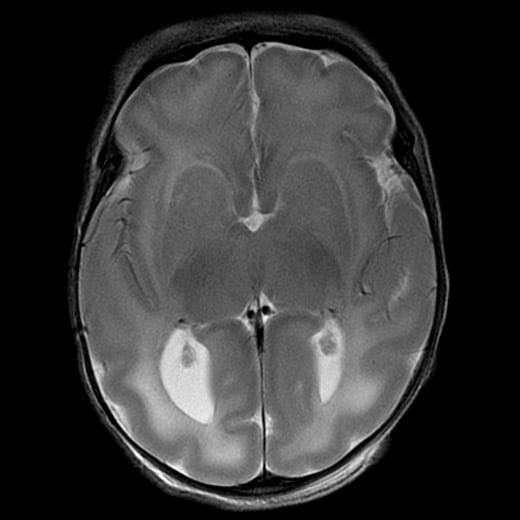Patient was a young adult working in finance at a major tech company found to be mute and diaphoretic.
Physical exam notable for fever, tachycardiac, hypertension, awake but not following commands, aphasic, and with hyperreflexia and muscle ridigity. CK peaked to 11,344.
MRI shows multiple ovoid to splotchy confluent lesions in the white matter with diffusion restriction. Lesions also enhanced with hyperperfusion (not shown).
Urine drug test positive for cocaine. Infectious work-up was negative. Steroids were started with good recovery.
Patient denied knowingly taking cocaine but did say weekly use of what they thought was MDMA with friends…
Final diagnosis: Levamisole-induced leukoencephalopathy. Levamisole is an antiparasite medication that is no longer used in the US but still in some other countries. It is a common cutting agent in cocaine. It’s neurotoxic effects primarily come from causing demyelination.


What are the expected long-term effects, if any? Given the adult brain’s capability of remyelination, and the fact that this is a young adult, is full recovery possible?
This complication of cocaine use generally manifests as a single episode of demyelination that recovers well with treatment. Of course, the long term depends on how often the cocaine abuse happens.
I understood your post to say that the demyelination was from the parasite stuff, not the cocaine. Does cocaine cause this even when not cut with the antiparasitic?
Yes that’s correct, it’s the levamisole that presented as demyelination in this case.
Cocaine by itself can also cause problems, which I would categorize in 3 ways:
Sudden-onset issues that are potentially life-threatening. Cocaine is a stimulant, which can raise blood pressure, heart rate, etc. Those effects can cause ischemic stroke, hemorrhagic stroke, rupture of pre-existing aneurysms (with subsequent intracranial hemorrhage), and seizures, all of which can show up on brain imaging.
Long-term issues. These are insidious, subtle changes from repeated use of cocaine, which will damage the brain through neurotoxicity + the long-term results of an accumulation of events from #1.
Complications from cocaine use. I would put levamisole in this category. For other drugs that are more commonly injected (rather than snorted or smoked), brain infections from use of dirty needles would also go into this category.
Thanks for clarifying.
Also layman/tourist weighing in - title your posts as you’d like. We learn more when we look up words!
It said in there that it was a good recovery, which for being bilateral lesions affecting a large portion of their brain, is pretty freaking lucky. I would have expected very little recovery and a lifetime of disability. I’m a pessimist when I see this stuff though, too many bad cases in the past.